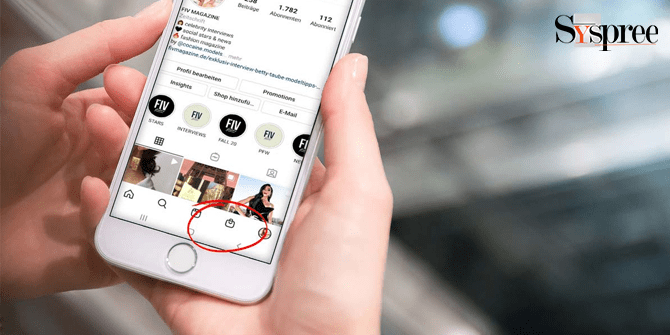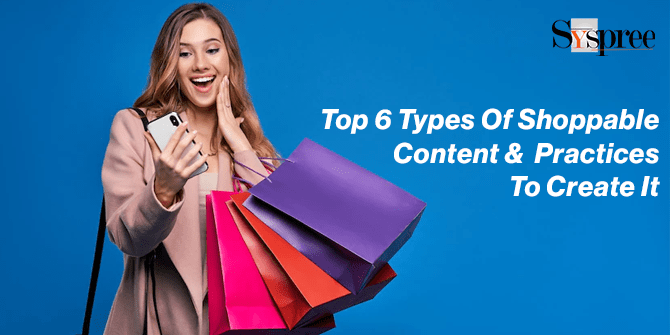For years, customers have had the option of acquiring in stores, online, via mobile apps, or (in some rare cases) mail-order directories.
Numbers show that 43% of Gen Z and 49% of Millennials have bought services or products straight from social media. This is big for brand names trying the interest more youthful consumers.
And also, they’re taking heed: Research conducted by the Harris Poll on behalf of Sprout Social found that 73% of businesses are selling on social media platforms and one more, 79%, strategy to within the next three years.
The experts at the best SMM agency in Singapore explain how are they turning social blog posts right into shoppable material. Doing so shortens the sales funnel and transforms consumers’ suitability when they’re inspired to purchase.
So let’s explore this more.
What is shoppable?
Shoppable content can be described as any digital asset such as a post, image or video on social media, which consumers can click to purchase. You can use Instagram Product Tags to highlight products from your catalogue in pictures and videos. This allows people to tap and learn more.
Social commerce is built on shoppable content. While there are situations where customers have to go through the checkout process on the brand’s website, some shoppable content allows transactions to be completed in one location.
This will enable users to buy directly from their apps, such as Facebook, Instagram, or TikTok.
Shoppable content has many benefits:
It was inevitable that the shift from physical shops to social shopping would occur. The pandemic accelerated it by five years. The volume of social commerce sales in the USA is expected to exceed $100 million by 2023.
Brands have an excellent opportunity to capitalize on emerging trends. Be aware that Gen Z and Millennials only want transparent and authentic brands.
Your shoppable content should reflect your brand’s values of humanity, just like your website, campaigns, or physical locations. It will be easier to convert and attract your audience if you create relatable content.
Here are some benefits shared by the top SMM company in Singapore to incorporating shoppable content in your digital marketing strategy.
-
Shorter sales funnel
Shoppable videos, social media posts, and ads allow buyers to get the products they need when they want them. There are no delays or hiccups in extending the sales funnel.
-
Better customer experience
Social media is a standard tool used by Gen Z and Millennials to find products. Why not meet them there? By creating content that is searchable and shoppable, you reduce the chances of abandoning your shopping cart. This creates a better customer experience.
-
Loyalty to brands increases
How can you build trust and loyalty right now? Storytelling. Shoppable content allows you to share real stories from people who have used your product. This content is meant to educate potential customers and show the product’s worth.
-
Conversion rates improved
Marketing and advertising are all about being in the right place at the right time. Targeted and personalized shoppable ads can help increase conversion rates.
How can you maximize your shoppable content campaigns and make them more profitable? To increase your ROI, there are three key strategies brands can employ:
- Hyper-targeting is possible by partnering up with niche influencers.
- Engaging shoppable content investing (E.g. Stories vs static advertisements)
- Showcase affordable products
Tommy Hilfiger is one of many brands taking advantage of live streaming shopping events, especially since the pandemic.
The brand has partnered with celebrities, social influencers, and models Elias Riadi. Viewers could then add items to their carts and checkout after.
Walmart is now hosting live shopping events on their ward Walmart Live platform and YouTube channel. Walmart regularly partners with celebrities and influencers to show new products and seasonal favorites.
Takeaway: To maximize ROI, team up with influential people and host a live event. Make the checkout process smooth.
-
You’ll get better competitive data, primarily if you use a tool such as Sprout Social.
Studying what works is the best way to build shoppable content. This is done by analyzing your campaigns and those of your competition.
Social Sprout allows you to identify which posts, hashtags, and topics are most popular with your audience based on past performance.
These performance data can be combined with social listening insight to give you the context necessary for building higher-converting social commerce campaigns.
Top 6 Types of Shoppable Content & Shoppable Articles
-
Shoppable Images

Top 6 Types of Shoppable Content & Shoppable Articles: Shoppable Images
Shoppable images include photos and pictures accompanied by shopping features to help customers find their desired products. eCommerce brands use images to attract, engage and influence customers.
A beautiful setting with product displays and attractive images could encourage customers to buy. You can create Shoppable images easily and publish them to your website using third-party tools such as a Visual Commerce platform.
This could allow for an immediate conversion without the risk of abandoning your cart.
-
Shoppable videos

Top 6 Types of Shoppable Content & Shoppable Articles: Shoppable videos
Another great source of shoppable social media content is high-quality, engaging videos. Videos are the most popular and interactive type of content.
YouTube streams over 5 billion videos each day, which has the potential to increase conversion rates by up to 80%. Brands can also embed product links to enable shopping on the videos.
Users can receive shoppable posts and marketing details about products in a dedicated video advertisement from brands. Videos are also shared more than any other type of content, allowing for extended exposure and traffic for businesses.
-
Buyable Articles

Top 6 Types of Shoppable Content & Shoppable Articles: Buyable Article
Blog posts and articles have a loyal readership. This loyalty shows that reports provide valuable and informative content for their readers. An article can be made shoppable by adding it to the content.
This is an excellent way of selling products in addition to engagement. The viewers will be influenced to buy if visuals and immediate capability accompany a concise product discussion.
-
Shoppable Magazines

Top 6 Types of Shoppable Content & Shoppable Articles: Shoppable Magazines
Magazines are a popular source of trending news and information both offline and online. Many brands have added shoppe ability to product images in digital shoppable magazines.
Magazines are well-known for their striking visuals, which inspire readers. Adding buying option links on the products page would redirect interested customers to the relevant product pages.
Fashion magazines are one of the most popular digital shoppable magazines.
-
Shoppable social media

Top 6 Types of Shoppable Content & Shoppable Articles: Shoppable social media
Shoppable content has been a starting point for social commerce platforms. Shoppable content can be found on Pinterest using buyable pins, Instagram shoppable post-marketing and Facebook shop.
-
Instagram Shoppable Photos
Shoppable Instagram allows business profiles to create shoppable stories using its built-in product tagging feature. Shoppable Instagram offers a variety of features that will enable users to tap into their social behaviour without interrupting their social media activities.
Brands have the option to turn their business accounts into online shoppable content stores. Users can interact with the posts and click on the product tags to purchase the products.
Instagram is a platform that focuses primarily on visuals. With shoppable content options, brands can make these visuals more appealing to customers and increase conversions.
-
Facebook Shop
Facebook introduced shoppable social media content using product tagging. Users can also purchase them through posts. You can also run Facebook Ads targeting specific audiences. A Facebook business page is required.
Facebook Shop also offers excellent customer relations by allowing customers direct contact with brands via Facebook messenger. This brings brands closer to their customers.
Social eCommerce has enabled it to be a diverse shoppable content ecosystem by linking commerce and social, i.e. social eCommerce. This shoppability is already a huge benefit for many big brands.
-
Shoppable Galleries
Shoppable galleries allow visitors to browse the brand’s products and engage with them.
These post galleries can be used as inspiration and are shoppable.
Brands may use user-generated or influencer content to let users see a product in its natural environment, how it looks, or how it can help them. This makes the content authentic and engaging, increasing brand engagement, conversions, and traffic.
-
Taggshop
Taggshop lets you use your content to convert it into sales. It’s a social commerce platform that allows brands to harness social content, create shoppable galleries, and increase conversions and brand growth.
Taggshop allows you to publish your Instagram store and UGC galleries. You can also post product reviews and shoppable galleries directly on your website. These features allow brands to engage with their website visitors.
They can also shop from the shoppable gallery by tapping on the hotspots for shoppable posts without having to search the whole website.
Why is shoppable media more valuable than regular content?
The experts at the leading SMM company in Singapore believe content has evolved into something more powerful, memorable, and interactive. The average person can recall about 65% of visual content within three days. These iterations of shoppable material have made the content more powerful, memorable, and interactive.
Visualization is essential for every touchpoint of the customer journey, particularly at the product discovery stage, where customers have a growing insatiableness for scrolling through irrelevant search results.
Brands make content shoppable by allowing customers to browse galleries, videos and images and then purchase the items they want with a simple tap. Convenience is not the only benefit of shoppable content over traditional content.
- The point of inspiration is combined with the point of selling through content.
- Creates a product experience that is real-life and inspires shoppers
- This eliminates the inconvenient journey of the buyer from the product description page to the long-drawn eCommerce
- It may take you longer to get to the purchase page.
- It allows brands to increase conversions, create social proof through inspiration, incite purchases, and increase their eCommerce conversion rate.
- Real-time shoppability allows for instant conversions without cart abandonment.
Shoppable content makes buying easier because it directs you from range to your cart, something traditional content can’t do.
Top Practices for Creating Shoppable Material
There are many reasons to create shoppable content. So the experts offering social media marketing services Singapore believes to get the best results and extract the actual value, strategic approach is the best for this content type. These are the best practices to follow when creating shoppable material.
-
Show your product in action.
Shoppable content should be able to lead to sales directly. It is essential to show your product to entice people to make a purchase immediately after viewing the content.
This means showing the product in action, whether through photos of users or videos showing how it works.
You could, for example, share a shoppable photo showing your home decor pieces beautifully displayed in space. You could also share a shoppable photo of someone using your makeup products to create a unique look.
-
Promote a sale with Shoppable Posts
Shoppable images and a message about the sale are crucial to achieving your sales goals. Shoppable posts make it easy to promote sales via social media. Customers who want to take advantage of the sale don’t have to miss it.
They can click through quickly and purchase on-sale products before they run out of stock. There is no need to make shoppable posts about all your items on sale. You can highlight your most popular products and low-stock items to increase sales.
Bird Brooklyn, for instance, highlights a few products and adds a caption about the ongoing sale. Customers can click on the images to view the products in each photo and then take advantage of the sale.
-
Use User-Generated Content
User-generated content is another way to increase sales through your shoppable postings. People shop online for social proof. This includes photos and reviews from real customers.
This allows them to see if other customers have vouched for the products and/or how it looks on real people. Your customers’ content could be a powerful tool for your shoppable posts.
Once you have permission from the user to use the content, make it into a position so that others can click through and purchase the product or learn more.
Glossier is a master at curating user-generated material. This has allowed the brand to create an authentic image that is approachable and human. Some of the UGC has been turned into Instagram shoppable posts, where people can learn more about their products and make purchases.
This is especially useful for makeup products as it allows people to see how a particular lip gloss looks on someone with a skin tone similar to theirs.
-
Show your Products in a Carousel
Your shoppable content might reach some users who are just browsing. You might not find the product they are looking for in a shoppable post. They may prefer something lower-end or more in line with their style.
They’ll be eager to shop around, just like when they enter your store. It is a great way to display all the products available in one place. Shoppers can browse multiple product options at your store by simply clicking or swiping.
There’s a good chance they will find something they like from the many options. Even if they don’t like the products, they may be interested in checking out other products on your site.
Tunnel Vision shares carousel photos on Facebook that show the different clothing items they have in their store. They want to demonstrate that they have something for everyone and that the must-haves customers should consider purchasing.
Conclusion
Every content marketing strategy is designed to increase leads and eCommerce conversions by providing valuable and engaging content. Shoppable content achieves this goal precisely and convincingly.
Shoppable content is a revolutionary product that unifies content and commerce. The brands have been able to deliver an exceptional consumer experience. Users have found it easier to shop and consume social media simultaneously and with less effort.
If you’re interested in learning more on such topics, check out our blog on Interactive Content: How to Produce Content That Attracts Your Ideal Clients.








Such an informative blog on Shoppable Content and the practices to create it. Thank you for sharing this, it was very useful in understanding the benefits of it
Hi Anita, we are pleased to know our blog was useful. Do check out our recent blog, 5 Important Steps For Success In lead Nurturing
Thank you for sharing such valuable information on shoppable content and practices. Got many new learnings from it.
Hello Rajat, We are pleased to know you found our blog helpful, Do check out our recent blog, 5 Important Steps For Success In lead Nurturing
Much obliged to you for sharing this blog. It was truly valuable in figuring out the significance of content creation. Thank you.
Hello sana, we are delighted to know that our blog was valuable and informative to you, do check out our recent blog, 5 Important Steps For Success In lead Nurturing